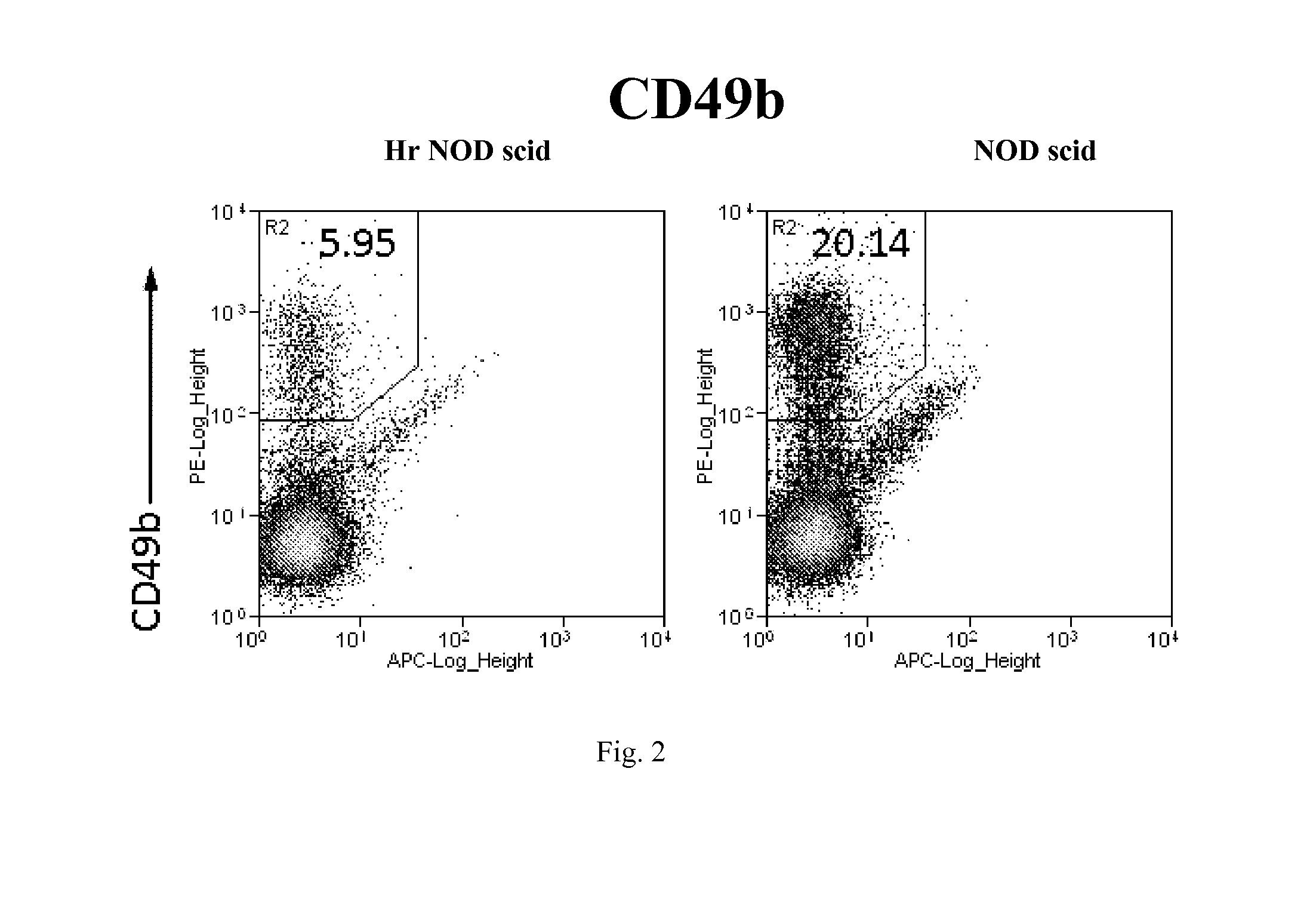Hairless nod scid mouse
a mouse and hairless technology, applied in the field of hairless nod scid mouse, can solve the problems of disadvantageous innate immune properties, exhibiting disadvantageous characteristics, and affecting the visualization and imaging of tumors, and achieves the effect of less tumor visualization and imaging, and less tumor visualization
- Summary
- Abstract
- Description
- Claims
- Application Information
AI Technical Summary
Benefits of technology
Problems solved by technology
Method used
Image
Examples
examples
Example
Selective Breeding to Produce Hairless NOD Scid Mice
[0053]Mice are bred as shown is Table 1. In summary, the steps are as follows (the presence of a mutant allele is indicated by the symbol +).
[0054]Step (1): Breed homozygous hairless (Hr+ / +) with homozygous NOD scid (Prkdc+ / +) mice. Preferably the Hr mice are males, because the Hr females may exhibit poor maternal characteristics. The F1 mice produced from Step 1 are all heterozygous: Hr+ / − and Prkdc+ / −.
[0055]Step (2): Select NOD scid heterozygous males and backcross them to NOD scid Prkdc+ / + homozygous females. The N2 mice are a mix of genotypes. Test offspring for the presence of the Hr gene by PCR, for the presence of the Prkdc gene by single nucleotide polymorphism allelic discrimination, and NOD scid genetic background by single nucleotide polymorphism profiling.
[0056]Step (3): Select males and females with at least 80.8% NOD scid genetic background that are homozygous for Prkdc (Prkdc+ / +) and heterozygous for Hr (Hr+ / −...
example
Xenograft of Tumorigenic Cell Lines
[0076]Tumorigenic cell lines derived from cancers of bladder, breast, head and neck, colon, blood, liver, lung, melanoma, ovary, pancreas, prostate, or testes are transplanted to hairless NOD scid mice according to procedures known in the art. The following cell lines are tested for ability to be uptaken and grow in hairless NOD scid mice: HTLA-230 (Brignole et al., 2004), CT-26 (Guba et al., 2001), BW5147 (Geldhof et al., (1998), Grant 519 (Wang et al., 2007), Karpas 299 (Francisco et al., 2003), L540cy (Francisco et al., 2003, Colo-699 (Boehle et al., 2001), SIT1 (Bromberg et al., 2005), TAC 7 (Bromberg et al., 2005), DU-145 (Glinskii et al., 2005).
[0077]Human large cell lymphoma cell line KARPAS-299 and mantle cell lymphoma cell line JEKO-1 is purchased from ATCC. KARPAS-299 cells are cultured in RPMI 1640 with 10% FBS, JEKO-1 cells in RPMI 1640 as well, with 20% FBS. Female mice at approximately eight weeks of age are subcutaneously inoculated ...
PUM
| Property | Measurement | Unit |
|---|---|---|
| Volume | aaaaa | aaaaa |
| Volume | aaaaa | aaaaa |
| Volume | aaaaa | aaaaa |
Abstract
Description
Claims
Application Information
 Login to View More
Login to View More - R&D
- Intellectual Property
- Life Sciences
- Materials
- Tech Scout
- Unparalleled Data Quality
- Higher Quality Content
- 60% Fewer Hallucinations
Browse by: Latest US Patents, China's latest patents, Technical Efficacy Thesaurus, Application Domain, Technology Topic, Popular Technical Reports.
© 2025 PatSnap. All rights reserved.Legal|Privacy policy|Modern Slavery Act Transparency Statement|Sitemap|About US| Contact US: help@patsnap.com



